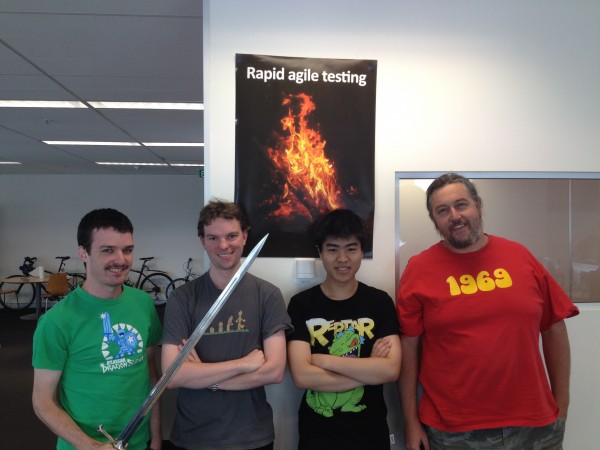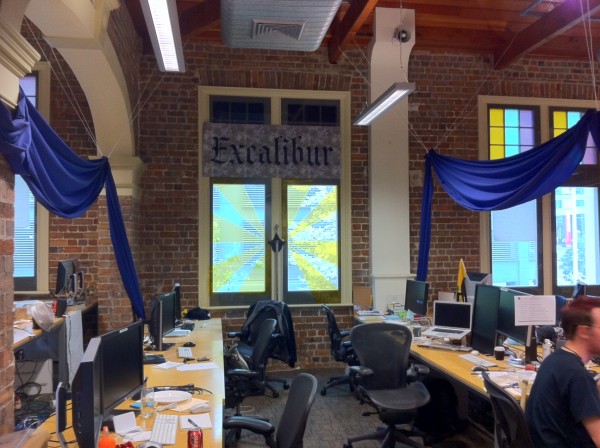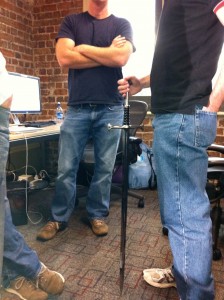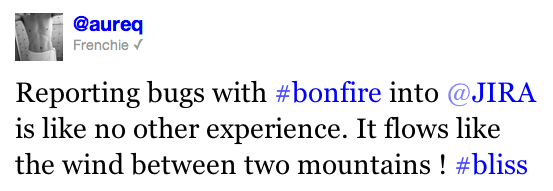This guest blog post is part of an Atlassian blog series raising awareness about testing innovation within the QA community. You can find the other posts in this series under the QA Innovation tag.
Previously, I explained how Bonfire (or Excalibur as it was then known) became an internal tool at Atlassian. In Part II I’ll explain how it became a commercial product.
Staying low
Lean startup advocates push the idea of minimum viable features and failing fast. Their idea is to get your product into customers hands as quickly as possible so that you don’t waste time building stuff people don’t want and spend more time building the stuff they actually ask for. That’s usually good advice and I could have taken this approach and released Bonfire internally earlier with only the ability to create issues and added screenshot support and then templates later. However, the time tracking study we’d already completed provided plenty of real world data to validate the functionality needed. Furthermore, at some point the thought of making this a commercial product had entered my mind. I figured to get the help I needed, I’d be better off making a big first impression rather than a small incremental one.
The internal launch attracted the attention of Nick Muldoon and Edwin Wong, product managers for Greenhopper and Jira at that time. Nick thought that the Greenhopper team might be able to help out by working exclusively on Bonfire for a week around Christmas. Unfortunately for me the Greenhopper developers had a backlog of innovation ideas of their own and planned to use the same week to catch up on them. Of course I didn’t let this stop me from suggesting to Nick that he’d left me high and dry, which elicited a much nobler response than that from him. Edward Zhang an undergraduate in his final year at university was working two days a week on Greenhopper and Nick offered to have him work on Excalibur. Ed quickly started adding support for Jiras custom fields, permission schemes and complex configurations to the create issue functionality which included creating the Jira plugin to expose custom REST end points.
Meanwhile I’d been putting the pressure on another Atlassian, Ryan Ackley, the only developer at Atlassian with experience in Component Object Model (COM) development to build an Internet Explorer compatible version of the extension. I admit I was pretty consistent in my efforts to sell the idea to Ryan but eventually he agreed to do it, possibly just to shut me up. In parallel, Edwin Wong, a Jira (and now Bonfire) product manager, began demoing Excalibur to customers and gaining their feedback. Things were progressing, but progress was slow. Then everything changed.
In March Jean-Michel Lemieux joined Atlassian as our new VP of Engineering. Previously he’d worked on IBM’s Jazz platform, which includes a traditional test case management tool. I hoped then that he could see the commercial potential in Bonfire. When he asked to first meet with me, I may have incorrectly told him that I was too busy that week, but if he wanted to come along to the Excalibur weekly meeting I might have time to talk afterwards. After getting the demo and a follow up product management pitch from Edwin, Jean-Michel gave us the green light to make Excalibur a real product.
It was a gutsy decision by someone still very new to their role. Still there was a catch. We had to announce the product at the Atlassian Summit in early June and release it a month later. That meant seven weeks to sink or swim.
Starting-Up
We needed to move faster than normal if we were going to make it, so we did some redecorating to constantly remind ourselves that we needed to do things differently. Although it doesn’t look like much (there’s a reason why we’re not interior decorators) our mini-medieval theme did the trick, mostly due to our very own Excalibur, purchased on eBay, hanging by the window. The sword wasn’t just for show. It served as our stand-up meeting token and still does to this day.
We also needed more back-end development muscle and hit the jackpot with Ian Grunert, a recent university graduate with talent beyond his years loaned to us by the Jira team. However, no teams were able to spare us a front-end developer, but some cheeky hijacking of our recruitment pipeline diverted the also very talented Gilmore Davidson away from the role he thought he was interviewing for and onto the Bonfire team. Hopefully no one else noticed. Ian & Gilmore teamed up and won the very next Atlassian ShipIt Day, which didn’t come as a surprise to those of us familiar with their work on Bonfire.
With Gilmore, Ian and Ed all on board and Ryan finishing off the IE port it looked like we were going to make it. All we needed was a new name.
We’d all grown used to Excalibur, but some people find it difficult to spell and it is used by plenty of other products already. Although it was tempting to choose a descriptive name, they can get dull quickly, so we wanted something that we could embue with our own meaning instead. Bonfire had been suggested by Edwin, with whom launching Bonfire had very much become a partnership, in a discussion about this being a tool to help testers explore the software they’re working on. The notion of a bonfire illuminating things in the dark or a bonfire guiding people through the dark struck a chord. Plus we liked the sound of it. It was short, strong and catchy. Qualities that had worked well for Jira. It seemed like the biggest mistake after we switched to using it, but by the end of the second week, it was a natural fit. Names need time to settle in.
At the Summit
Although we had to cut a few things like full page screenshots and the colour picker from the annotation tools, we were ready for the Atlassian Summit in June and Bonfire was announced during the keynote. Despite being a free beta, we got our first paying customers that same day.
A month later, with great support from Ken & Christina in our marketing team, we shipped 1.0. Shortly afterwards, and almost two years after the idea first came to mind, I handed over the development reins to Brad Baker who joined Bonfire from a development team lead role in Jira. Since then the team has shipped a major release nearly every fortnight and I’ve been happily playing the role of a demanding customer that sits too close to the development team to be ignored.

The Bonfire development team: Ian, Gilmore, Ed & Brad
Happily ever after
Now, almost six months after it was released, it’s extremely satisfying to see Bonfire succeed and to read the positive feedback from our customers.
The story of Bonfire’s beginnings has a happy ending, but even in a bottom-up, innovative company like Atlassian, it was a challenge. It requires a lot of support. Without the help of my colleagues and a fair amount of luck, Bonfire wouldn’t exist. However, I like to think that a lot of that help and luck was generated simply by giving people the impression that this project’s success was inevitable. People naturally want to get involved in projects bound for triumph, not ones struggling in desperation. Most of the time Bonfire’s fate was uncertain, but by keeping it under the radar and choosing the right time to promote it internally and get others involved masked that fact and in so doing negated it as well.
Once again the lesson learnt was to be the change you seek, because people can’t start things for you, but if you persevere, they can help you finish.


